Did you know that amphibians, with their permeable skin, are key indicators of environmental health? This shows how important it is to create urban backyard wildlife habitats. As cities grow, we need more green spaces to support local ecosystems. By turning your backyard into a thriving habitat, you’re doing more than just gardening. You’re helping biodiversity and sustainable landscaping in your city.
Urban gardening has become more important lately. The success of monitoring amphibians in Bainbridge Island shows how small water bodies like ponds and marshes are vital for wildlife. Your backyard can be a home for many species, from birds to butterflies, with native plants and eco-friendly practices.
Sustainable Home Magazine says keeping natural debris in water features is key to attracting wildlife. This approach to landscaping helps local fauna and makes urban ecosystems more sustainable. By creating an urban backyard wildlife habitat, you’re part of a movement making a difference in your city.
Table of Contents
Key Takeaways for Creating Urban Backyard Wildlife Habitat
- Urban backyard habitats support local biodiversity
- Native plants are essential for wildlife-friendly gardens
- Small water features significantly impact urban ecosystems
- Natural debris attracts and sustains wildlife
- Creating habitats contributes to sustainable urban living
- Community involvement enhances conservation efforts
What is a Backyard Wildlife Habitat?
A backyard wildlife habitat is a space that supports local plants and animals. It brings nature closer to home, even in cities. These habitats are key for wildlife conservation and keeping cities balanced.
Definition and Purpose
A wildlife habitat in your backyard offers food, water, shelter, and nesting spots for local creatures. It’s a safe haven for animals and insects, supporting biodiversity right outside your door.
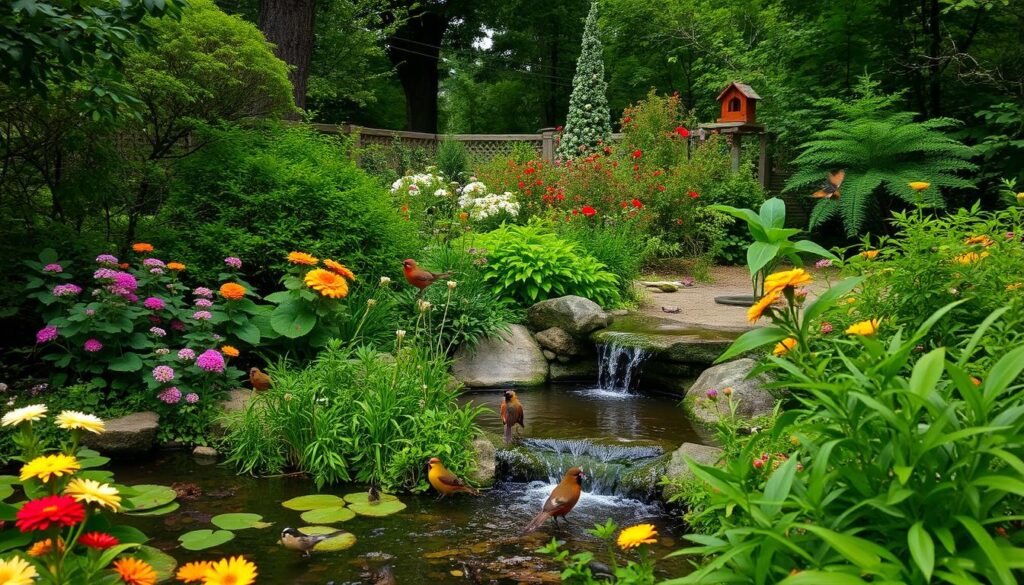
Benefits in Urban Settings
Creating wildlife habitats in cities has many benefits. They help keep the environment balanced, support pollinator gardens, and provide a home for urban wildlife. These spaces also help you connect with nature, reducing stress and improving well-being.
Key Components for Creating Urban Backyard Wildlife Habitat
Successful backyard habitats include:
- Native plants for food and shelter
- Water sources like birdbaths or small ponds
- Nesting areas and cover
- Sustainable gardening practices
Common Misconceptions
Many think urban wildlife habitats attract pests or need large spaces. But, even small areas can support wildlife with thoughtful naturescaping. These habitats mostly attract birds, butterflies, and beneficial insects, not dangerous animals.
By understanding these basics, you can start transforming your backyard into a thriving ecosystem. It will support local wildlife and enhance your living environment.
Why Build a Backyard Wildlife Habitat in the City?
Creating a backyard wildlife habitat in urban areas is a powerful way to support local ecosystems. Urban wildlife faces many challenges. Your backyard can become a sanctuary for various species.
The Importance of Supporting Local Wildlife
Urban development often disrupts natural habitats. By creating a wildlife-friendly space, you provide crucial resources for local fauna. Incorporating water features and bird houses can attract a diverse range of species to your yard.
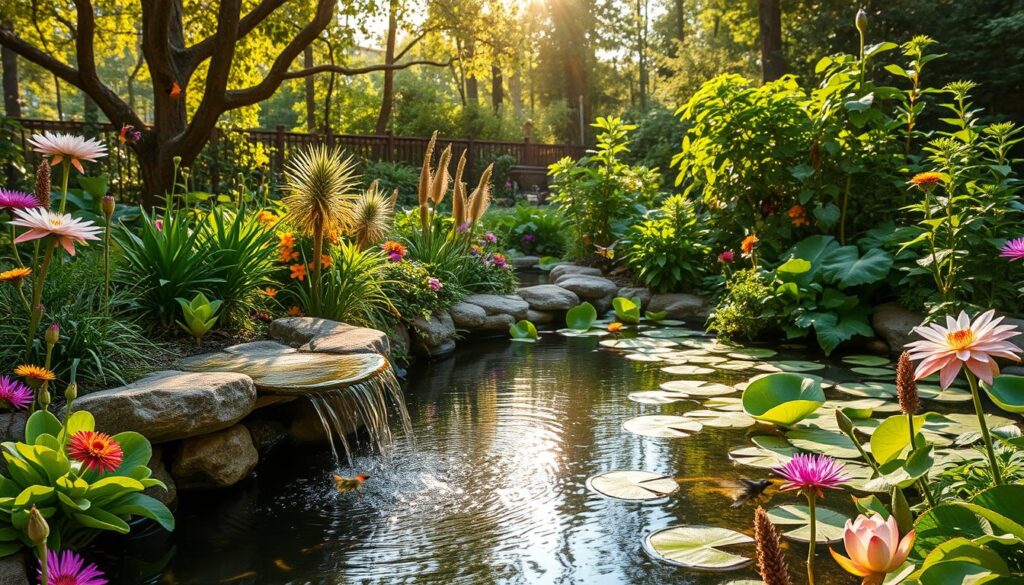
Environmental Benefits for Urban Areas
Urban wildlife habitats contribute to biodiversity and ecosystem health. A recent study found that high-quality urban habitats can support significant amphibian populations. One reserve identified 198 native amphibians. These habitats also help combat issues like wetland loss and climate change impacts.
Personal Enjoyment and Mental Health Benefits
Tending to a wildlife habitat offers personal rewards. Observing nature in your backyard can reduce stress and improve mental wellbeing. It’s a chance to connect with nature without leaving your home.
How It Contributes to a Sustainable Ecosystem
Your backyard habitat is part of a larger ecosystem. Eco-friendly practices like composting and avoiding pesticides support soil health and insect populations. Community engagement in habitat creation can significantly enhance urban wildlife conservation efforts.
- Preserving small water bodies serves as nurseries for amphibians
- Eco-friendly practices support overall ecosystem health
- Community involvement amplifies conservation impact
By creating a backyard wildlife habitat, you’re not just enhancing your own space. You’re contributing to a more sustainable urban environment for all.
How to Get Started: Planning Your Urban Wildlife Habitat
Starting an urban wildlife habitat requires careful planning. Focus on sustainable gardening to make your space a haven for local plants and animals.
Assessing Your Available Space
First, check out your yard. You can do eco-friendly landscaping, no matter the size. Measure your space and note where it’s sunny or shady. This helps you choose the right plants and arrange them.
Choosing the Right Plants for Your Climate
Pick native plants that do well in your area. They help pollinators and need less care. Adding fruit trees to your garden is also a good idea:
| Tree | Sun Exposure | Soil Type | Soil pH |
|---|---|---|---|
| Fig | Full sun | Well-drained, loamy or sandy | 6.0-7.5 |
| Mulberry | Full sun | Well-drained | 5.5-7.0 |
| Lemon | Full Sun to Part Shade | Moist, Well-draining | 5.5-6.5 |
Understanding Local Wildlife Needs
Learn about the wildlife in your area. Create butterfly gardens with flowers that attract them. Also, set up backyard ponds for birds and amphibians. Schools like University Elementary at La Fiesta teach kids about pollinators and conservation.
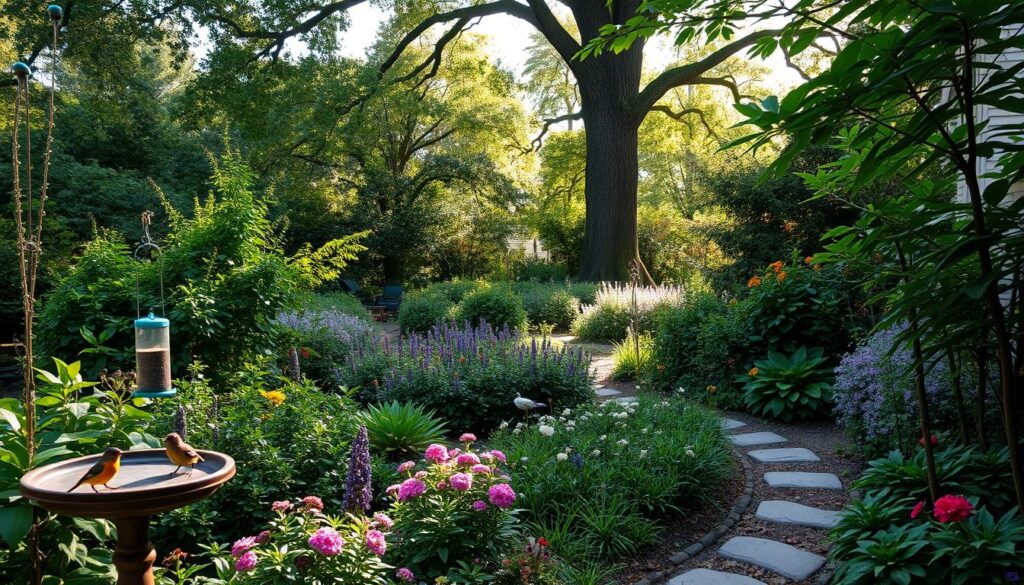
Creating a Wildlife-Friendly Layout
Plan your garden with different layers of plants. Use ground cover, shrubs, and trees for various habitats. Add features like rock piles for shelter. Even small actions, like planting trees, help a lot. Local students planted 22 trees at Colegio Vista Park, helping urban wildlife.
“Every garden can be a sanctuary for wildlife, no matter its size. The key is thoughtful planning and a commitment to sustainable practices.”
Essential Elements for a Thriving Backyard Habitat
To make a successful urban wildlife habitat, you need to plan well. Focus on restoring habitats and conserving biodiversity. This way, your backyard can become a lively ecosystem for local wildlife.
Food Sources: Plants, Feeders, and Natural Foraging
It’s key to offer different food types for wildlife. Plant native plants that give fruits, nuts, and seeds. Also, use bird feeders to add to the natural food. By landscaping in an ecological way, you can help wildlife find food naturally.
| Plant | Light Requirement | Soil Type | pH Range |
|---|---|---|---|
| Calamondin | Full sun to partial shade | Moist, well-draining | 5.5-7.0 |
| Elderberry | Full sun to partial shade | Moist, fertile | 6.0-8.0 |
| Fig | Full sun | Well-drained loamy or sandy | 6.0-7.5 |
Water Sources: Birdbaths and Water Features
Water is vital for wildlife. Put up birdbaths and feeders for birds to drink and bathe. A small pond or water feature can attract more species. Keep water clean and maintained to stop disease.
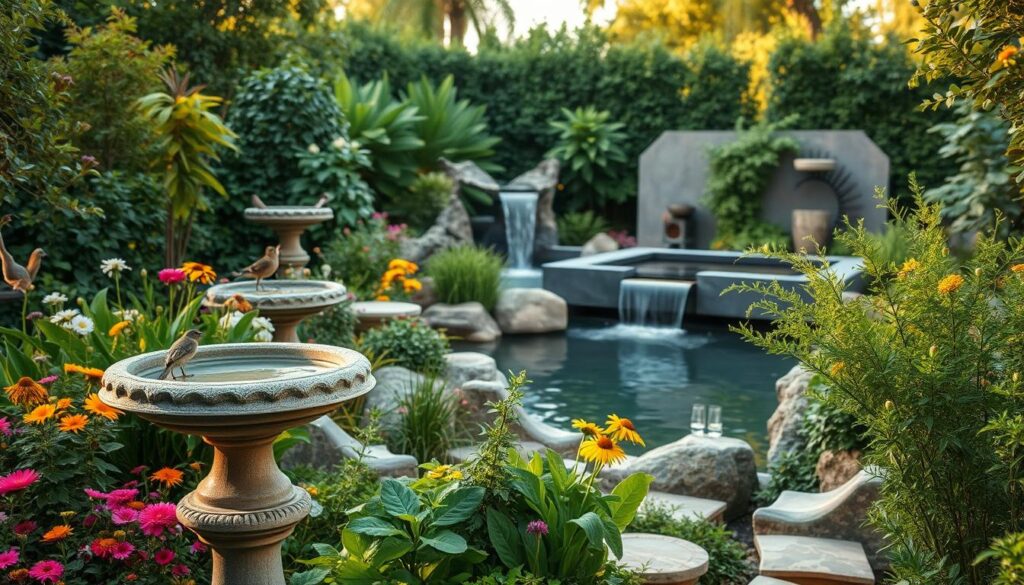
Shelter and Nesting Areas
Make safe spots for wildlife by adding different shelters. Plant dense shrubs, put up birdhouses, and leave logs for nesting. These help restore habitats and boost biodiversity in cities.
Natural Pest Control
Use natural ways to control pests for a healthy ecosystem. Encourage good insects and birds that eat pests. Stay away from harmful chemicals to keep your habitat balanced. This helps both wildlife and your garden.
“By providing food, water, shelter, and using natural pest control methods, you create a welcoming environment for urban wildlife to thrive.”
Best Native Plants for an Urban Wildlife Habitat
Creating a wildlife-friendly space in your backyard starts with the right plants. Native plants are key to supporting local ecosystems and improving soil health. They need less care and water because they’re made for your area’s climate.
Why Native Plants Matter
Native plants are vital for wildlife habitats. They offer food and shelter for animals, insects, and birds. These plants also help keep the soil healthy and support rainwater harvesting, making your garden sustainable.
Low-Maintenance Natives for City Gardens
Here are some native plants perfect for urban wildlife habitats:
| Plant | Sun Exposure | Soil Type | Soil pH |
|---|---|---|---|
| Elderberry | Full sun to partial shade | Moist, fertile | 6.0-8.0 |
| Fig | Full sun | Well-drained, loamy or sandy | 6.0-7.5 |
| Mulberry | Full sun | Well-drained | 5.5-7.0 |
Seasonal Planting Guide
Plan your garden for all seasons. Plant elderberries in spring, figs in late fall, and mulberries in winter. This way, your garden will always have something to offer wildlife.
Sourcing Native Plants
Look for native plants at local nurseries, botanical gardens, or native plant societies. These places offer plants that fit your area perfectly. They help your garden thrive and support local wildlife.
Encouraging Birds, Bees, and Butterflies in Your Backyard
Creating a wildlife-friendly garden is a great way to care for the environment. It supports urban ecology too. By adding the right plants, water, and shelter, you can attract birds, bees, and butterflies.
Attracting Pollinators with the Right Plants
Native plants are key for attracting pollinators. They need less care and offer homes for local insects and birds. Sunflowers, like Lemon Queen, are great choices. They draw bees, butterflies, and hummingbirds, and provide seeds and shelter.
Birdhouses, Feeders, and Nesting Boxes
Bird feeders are vital for attracting birds. Place them safely, away from predators. Offer different seeds to attract various species. Birdhouses and nesting boxes give birds shelter and places to breed, helping urban bird populations.
Creating a Butterfly Garden in the City
To make a butterfly garden, plant flowers rich in nectar and host plants for caterpillars. Mix annuals and perennials for food all season. Add flat stones for butterflies to warm up on.
The Role of Bees and How to Support Them
Bees are vital for pollination. Help them by planting native flowers and avoiding pesticides. Also, provide shallow water and create nesting sites with bare soil or hollow stems.
| Habitat Element | Benefits | Examples |
|---|---|---|
| Native Plants | Natural food and shelter | Sunflowers, Milkweed |
| Water Sources | Hydration for wildlife | Birdbaths, Small Ponds |
| Shelter Elements | Protection and nesting | Birdhouses, Log Piles |
| Sustainable Practices | Protects beneficial insects | Avoiding Pesticides |
Sustainable and Eco-Friendly Practices for Urban Habitats
Creating urban wildlife habitats is a great way to help nature. By using green landscaping, you can turn your backyard into a home for plants and animals.
Organic Gardening and Composting
Try organic gardening to make your space friendly for pollinators. Stay away from harmful pesticides and use natural ways to keep pests away. Start composting to cut down on waste and make your soil better.
This not only helps your garden but also reduces waste in cities.
Water Conservation
Use rainwater harvesting to save water. Collect rainwater for your plants to lessen the need for city water. Think about adding wildlife ponds, which are key for many animals and boost your area’s biodiversity.
Promoting Biodiversity
Plant native species to attract local wildlife. The Chesapeake WILD Program focuses on saving endangered species. By making areas for seeds and creating hedgerows, you help many animals, like the turtle dove, which is now more common in western Europe.
Sustainable Home Magazine suggests adding nature-friendly features to cities. This could be small wetlands or mini-floodplains in your yard. They help both wildlife and solve city problems like pollution and flooding.
Dealing with Challenges in an Urban Wildlife Habitat
Creating wildlife-friendly spaces in cities has its own set of challenges. As you start using eco-friendly backyard practices, you’ll face obstacles. But don’t worry, there are strategies to help you overcome them.
Managing Pests and Unwanted Animals
Keeping pests away is crucial in urban wildlife habitats. Use companion planting and attract beneficial insects to control pests. For bigger animals, humane deterrents like motion-activated sprinklers work well.
Handling Neighbor Concerns
It’s important to talk openly with neighbors about wildlife. Explain the good things about your eco-friendly backyard, like natural pest control and more biodiversity. Encourage neighbors to join in your urban gardening to build community support.
Adapting to Space Limitations
Make the most of small spaces in your wildlife-friendly habitat. Try vertical gardening, container gardens, and plants that serve multiple purposes. Even tiny areas can become vibrant ecosystems with the right planning.
Protecting Your Habitat from Pollution
Keep your eco-friendly backyard safe from city pollution. Use dense plantings as barriers and raised beds for plants you eat. Avoid harmful chemicals and test your soil regularly to keep your habitat healthy.
| Challenge | Solution |
|---|---|
| Pests | Companion planting, beneficial insects |
| Neighbor concerns | Education, community involvement |
| Limited space | Vertical gardening, container gardens |
| Urban pollution | Plant barriers, raised beds, soil testing |
How to Certify Your Backyard as a Wildlife Habitat
Certifying your backyard as a wildlife habitat is a rewarding step in wildlife conservation. It shows your commitment to biodiversity and sustainable gardening. It also encourages others to join in ecological landscaping.
Steps to Meet Certification Requirements
To certify your backyard, you need to provide food, water, cover, and places for wildlife to raise young. Use native plants and create water features. Offer nesting boxes and practice sustainable gardening like composting and avoiding pesticides.
Recognized Organizations for Wildlife Habitat Certification
Several organizations offer certification programs:
- National Wildlife Federation’s Certified Wildlife Habitat program
- Audubon Society’s Bird-Friendly Habitat certification
- Xerces Society’s Pollinator Habitat certification
Benefits of Certifying Your Urban Habitat
Certification helps wildlife conservation and creates wildlife corridors in cities. It also teaches kids and neighbors about backyard ecology.
Showcasing Your Certified Wildlife-Friendly Yard
Display your certification sign proudly. Host workshops to share your knowledge on sustainable gardening. Join local conservation groups and participate in community events to inspire others.
By certifying your backyard, you’re not just creating a haven for wildlife. You’re part of a larger movement towards urban biodiversity and sustainable living.
Community Involvement and Education on Urban Wildlife
Getting your community involved in urban ecology can really help protect biodiversity. Hosting workshops and educational events can spark interest in taking care of our environment. Sustainable Home Magazine (https://sustainablehomemag.com) has great resources for planning these events.
Hosting Workshops and Educational Events
Set up hands-on activities to teach people about wildlife conservation. For instance, a project by three environmental groups and the Woodland Park Zoo monitored amphibians. Volunteers helped count species in local ponds, learning about urban wildlife while aiding science.
Connecting with Local Conservation Groups
Working with local groups can make a bigger difference in protecting biodiversity. In 2024, Bloedel Reserve found 198 native amphibians. This data helps focus conservation efforts and check on habitat health. Joining forces with other groups can share resources and knowledge, boosting community involvement in wildlife protection.
Teaching Kids About Backyard Ecology
Teaching kids about backyard ecology helps them care for the environment for years to come. The University Elementary School at La Fiesta grew its native garden, teaching about water-saving gardening. You can start similar projects, like tree-planting events.
At Colegio Vista Park, students planted 22 trees for Arbor Day. This shows how kids can help create wildlife habitats in cities.




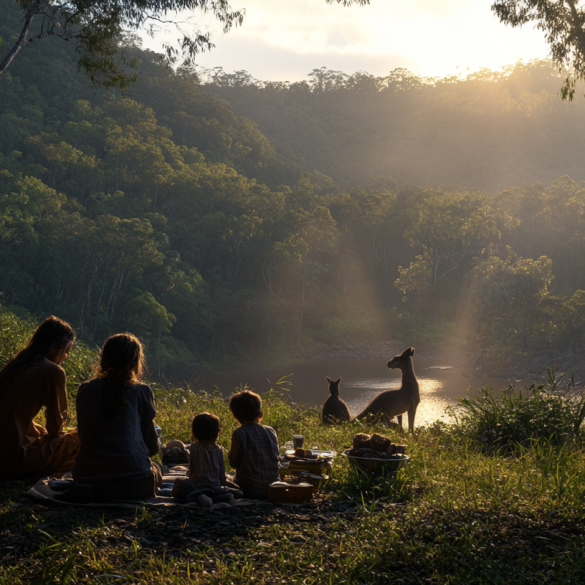
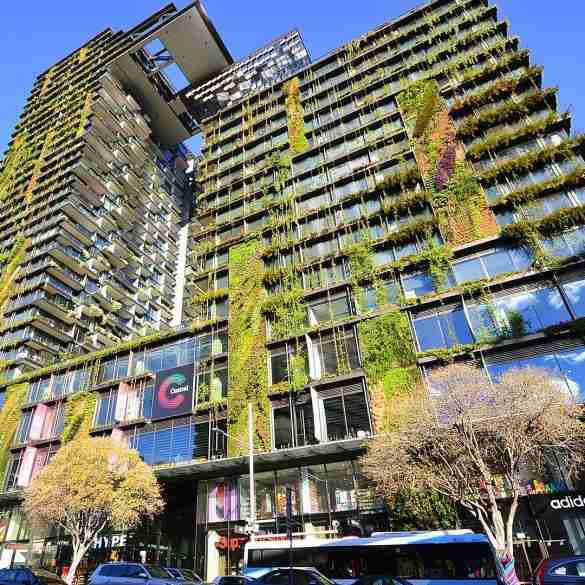

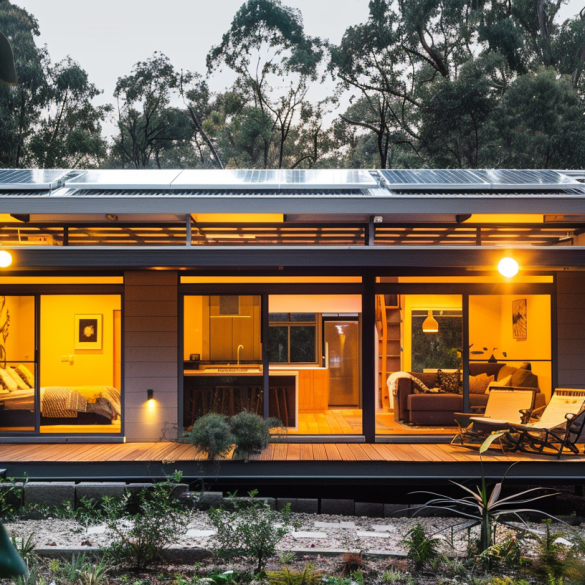


1 comment
[…] biodiversity to promote natural pest control. Include plants like sage and oregano, which attract beneficial insects while repelling harmful […]